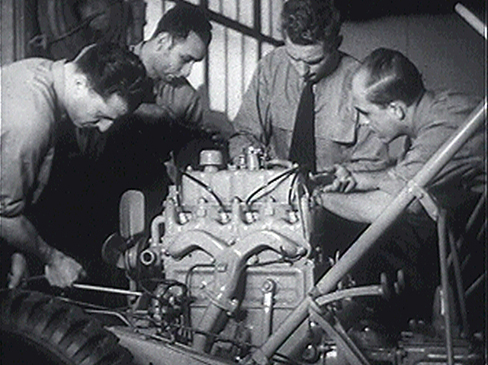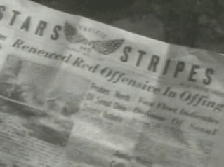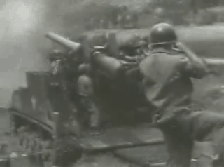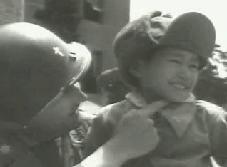It wasn’t the best of times nor the worst of times. It was 1963. History in the United States was moving from the tragedy of legalized segregation to the farce of de facto segregation, and, in the world at large, the colonialist past was being transformed into the neo-colonialist present. The challenge of the Cuban Revolution was daily being turned into another “Communist threat” by the dominant political ideologues. “Listening for the new told lies,” most of us just believed.
I was living in a village of about 200 people in Northeastern Pennsylvania. Harford township included an area encompassing 33 square miles and another thousand or so people, mostly family farmers. My stepfather worked at Sears in the medium-sized city of Binghamton, about thirty miles north. Some of the others who lived in Harford also commuted to work, some to Scranton about thirty miles to the south. Others made their living in various ways, many quarrying the locally abundant flagstone.
I was a high school student. My classmates and I had travelled to the Big Apple in our junior year and would see the nation’s capital during our senior trip to D.C. We were being educated, sometimes very intensely, in matters such as solid geometry, the dissection of frogs, Silas Marner, the memorizing of the Gettysburg Address, and how to play basketball.
Subjects like philosophy, the nature of political power, and any critique of the political economy we lived in were, for all intents and purposes, entirely ignored by our teachers. Once the daily ritual of reciting the “pledge of allegiance” had been droned through, we got on with life, as most of us would after we graduated. As is the case today in every nation in the world, we Americans were enlightened both in school and out of it by people who echoed one another. Others, if any, had no audible voice. The school boards of America made sure of that, and Harford was no exception. Philosophy was left to the impressions that Sunday School stories made on us at the First Congregational Church and to the weekly sermons by Reverend Williams as we got older. Religion was as close to understanding our relation to the world and to other human beings as we’d ever get.
| Cold War propaganda came in the form of educational entertainment as much as news. . . . Several of these programs concerned imminent nuclear war and instructed the public on what to do in the event of a nuclear bomb attack. Other programs, such as The Armed Forces Hour and The Big Picture, recounted U.S. military victories from WWII and demonstrated U.S. preparedness for the next war. The Big Picture, produced by the U.S. army, was “one of the most widely televised public service programs in history” ([Nancy Bernhard, U.S. Television News and Cold War Propaganda, 1947–1960, New York: Cambridge University Press, 1999] p. 142). The show presented such varied topics as the organization of the army, the occupation of Berlin,West Point, Communist atrocities in Korea, and historical reenactments of great moments in military history. The lead narration each week proclaimed:
As the opening narrative suggests, many of these programs were sensationally militaristic and promoted a crisis mentality. (Kenneth A. Osgood, “Hearts and Minds: The Unconventional Cold War,” Journal of Cold War Studies 4.2, Spring 2002, p. 104) |
Most folks in Harford voted Republican, although there were a few renegade Democrats, one a family of Catholics and the other composed of a family who never went to church. In sophisticated circles, it was said that Democrats were more likely to favor public ownership of the utilities, whereas Republicans weren’t so inclined. That was the highest level to which political observation got in Harford. Of course, hatred of anything smacking of the “Communist threat” was taken for granted. Americans were NOT going to become slaves of brutal bureaucrats. Life was good, as it should be in the land of the free and home of the brave. That much was obvious to us all. Episodes of Industry on Parade broadcast on WNBF extolled the clean, good-hearted nature of our economic system. Also shown on channel 12 was The Big Picture, a production of the U.S. Army which graphically demonstrated how our strong military protected us from the menace posed to us by the Communist countries.
“School of the Jeep! Training U.N. Peace Keeping Forces in Jeep Repair and Maintenance. Willys-Overland Plant, Toledo, OH,” Industry on Parade (16 November 1950).
Thus, we were educated. And by the time we were ready to graduate from high school, we were also ready to take our places in society. As much media and authority as possible was focused on our President Kennedy telling us not to ask what our country could do for us, but to ask what we could do for our country. Eisenhower’s farewell address, warning of the power of the military-industrial complex, was either unknown or had been dropped down the memory hole in the haze of the first five minutes after the corporate TV evening news. Details which had been brought to us by John Cameron Swayze, Chet Huntley, and David Brinkley were always lost in the trail of alpha waves which led to prime time TV. After all, as Dinah Shore told us at the end of her Chevy-sponsored shows, “America’s the greatest land of all.” And most of us just took this aphorism for granted.
Harford, like so many other burgs of that day and this, was pretty much sealed (like a “sealed tuna sandwich with the wrapper glued” in the words of Frank Zappa) from any substantial play of diverse ideas. So, when it came to deciding whether to go to college or go into the military, political and philosophical questions did not enter my mind, nor did they cross the mind of most any male contemplating what to do about military service. We were “babes in the woods,” and the flower of American youth was essentially free for the asking for the military. The draft existed besides, and according to the constantly conveyed common sense of that time and place, you had to go “in,” sooner or later. That fact was accepted, as much as the fact that everyone was either Protestant or Catholic. The advantage of going in first was that you were able to choose which service to be in; otherwise, it was the Army, most likely becoming a foot soldier. My dad had been in France in the Army in ’44, so the Army wasn’t totally out of the question either. But you got “training” if you qualified after you got in, and that option was offered only to those who enlisted. Plus, there was the added advantage of becoming eligible to be paid to go to college for four years after you got out — the GI Bill.
I didn’t realize how badly I had been lied to. Well, not lied to, but only told partial truths. After all, the educators had themselves not been critically educated about how the system actually worked. And, if they had been and had attempted to educate us in the same way, they’d have lost their jobs pronto. I hadn’t even been told about deferments, a ploy which would serve many of my future college mates well, until Nixon ended the draft to stop the anti-war movement.
An ex-Marine and Jack Webb’s movie The DI impressed me. I figured that I could escape the idiocies of rural life and complete my rite of passage to adulthood — plus pay for college myself (as opposed to depending on my parents) — by becoming a Marine. I joined the Marine Corps fresh out of high school in June of that year.






